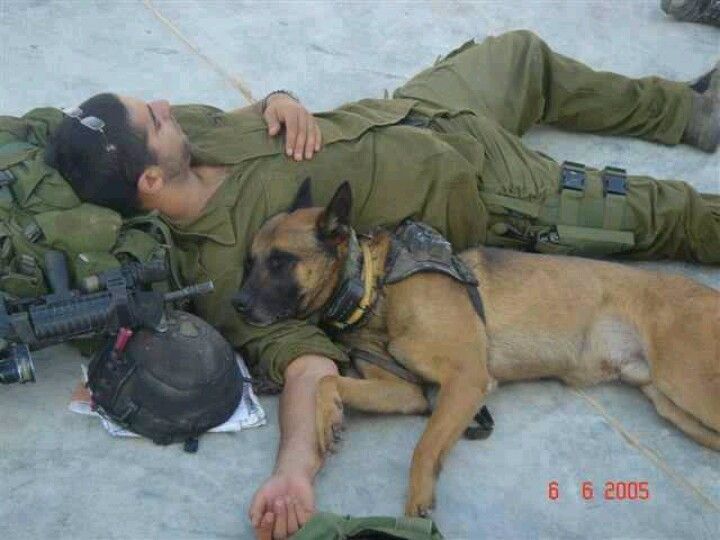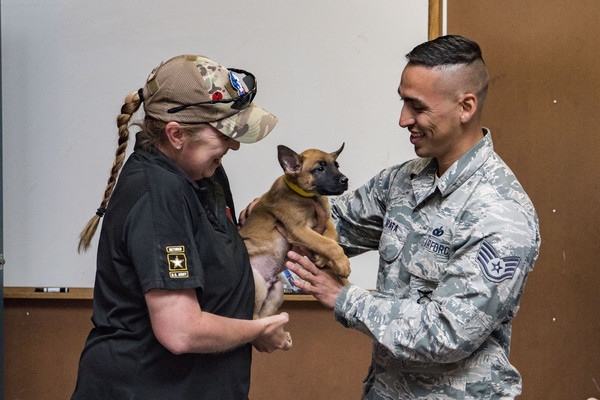Man’s best friend, a most reliable employee and an “A Number One” battle buddy. Special does not seem to aptly encompass the nature of the unique relationship shared by human and canine. It is a mutually beneficial dynamic based on devoted trust, and then some. Was Dog actually created to be Adam’s companion in the Garden of Eden? One wonders if Woman is not the true domesticated animal. Maybe, G-d thought it would be good for Man to study and understand Woman, work to earn her trust, before bringing such an unpredictable life form into his world. Most men would probably say they understand their dog far better than they understand their wife, I’ll just betcha. Divinely placed or no, the furry beasties have become an innate part of the human experience . . . and, our survival.
Now, dogs certainly have improved their lives by choosing to allow mankind to care for them, it’s not all selfless love on their part! Conversely, we have exploited their loyalty and desire to avoid our displeasure . . . sending them into some of the hairiest battle conditions and most dangerous terrains to assist and protect a whole passel of two-legged assets. Most of today’s Armed Forces fur missiles, also known as the Military Working Dog (MWD), are used as sentries or as sniffers. They’ve got it fairly easy compared to the MWDs of yesteryear.

Canines have been serving mankind in war since at least 600 BC. Yes, our beloved pet snoring away on the couch has ancestors who’ve achieved glorious victories on fields of battle. Fur missiles were deployed as lethal chaos makers. If there was no Kraken to release, unleash the hounds! Troops either snuck up behind the doggy distracted enemy or waited for their dogs of war to wear down the foe before moving in for the final strikes. My critter wimp sensibilities find that barbaric but they also find hunters using dogs to tree bears, barbaric . . . perspective. Thankfully, as warfare has become somewhat refined so has the canine job description.
Our modern war against Islamic Terrorism has added a new skill to the list of MWD uses – offending people. Muslims believe dogs to be unclean. Using them in Islamic nations afflicts the enemy with both psychological as well as physical stressors. Whether a canine is catching rats in trenches during WW I, sniffing out WMDs (similar acronym, huh) in the Middle East, or making it possible for a military veteran to leave his or her home . . . dogs are an essential tool in war and in peace.

When a dog enlists in the U.S. Army, he goes to puppy boot camp at Joint Base San Antonio-Lackland in Texas. The 341st Training Squadron gets them for 120 days of initial training; the dogs learn basic obedience, attack commands and some sniffing skills. After Basic, they get to meet their handler and the man/dog teams are then trained by members of the 37th Security Forces. Teaching the bipeds to understand Dog is the biggest challenge during this phase. Dogs are selected for intelligence, trainability, heart and athleticism. Military Working Dog Handlers are also carefully selected and scrupulously trained. If you see a military K-9 and his handler, you are looking at two highly skilled members of the U.S. Armed Forces.
The three most common MWD breeds our U.S. military employs today are German and Dutch Shepherds, and the Belgian Malinois. Anybody who has ever had one of these breeds in their home knows why the Army likes ’em so much. While the Air Force takes care of training, the Army takes care of the canines, all over the world. We have a very comprehensive military animal veterinary program in the US of A. If a youngster in your life is trying to decide between a military career or an animal medicine vocation, they can do both!

See also: Are you a Wal-martian?
Safety, first. U.S. Army and Isreali defense departments are researching ways to keep our MWDs more safe as they work. Body armor and gas masks have been designed, and are being tweaked, to protect the furry warriors from bio weapons and concussive force. Studies are currently being conducted on medications to stave off the damage done by nuclear and bio agents if the dog is exposed to same. Military canine medical research could produce effective prophylactic and treatment options for our two-legged assets and civilians.
Dogs serve man, we owe them every minute of love and tidbit of food. Military Dogs bring so much more than talent and ability to our national defense systems. In the words of Army Colonel David Rolfe, Director of the Defense Department’s Military Working Dog Program, “A machine doesn’t care if it finds something, but a dog wants to please its handler. A dog will go looking for something on its own where a machine won’t . . . dogs have a heart—something that makes them an invaluable asset to our fighting forces.”

We currently have about 2,300 dogs enlisted in the U.S. Armed Forces. Some, are available for adoption when they retire. Be approved and experience the honor of living with a real American Hero . . . not, just being one. Has anybody been blessed to serve with one of these amazing furballs?
IF INTERESTED:
- 341st Training Squadron
- DoD Military Working Dog Veterinary Service (DoDMWDVS)
- IDF Training (Main photo is from this page)
Just for fun . . . a short story that makes ya go, hmmmmm
Tom Edison’s Shaggy Dog – Kurt Vonnegut
